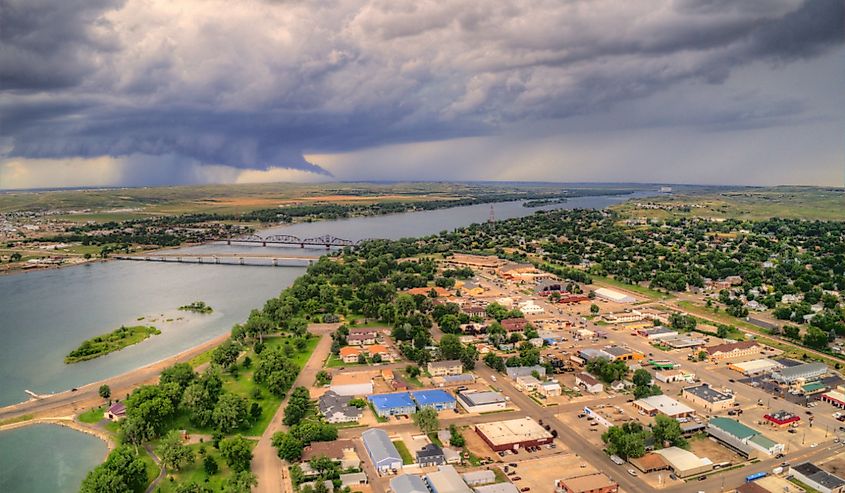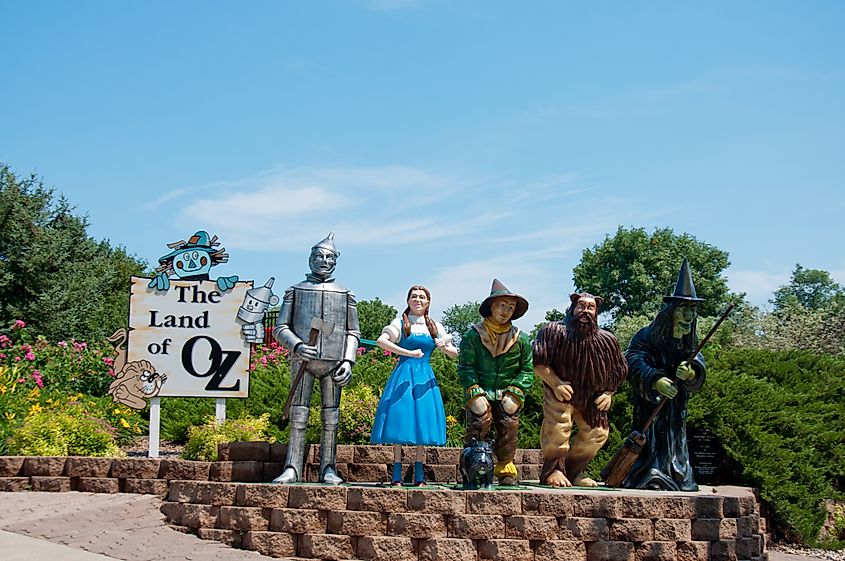Mention South Dakota, and the name calls to mind the United States’ legendary western frontier. Today, the Midwest state has recovered from its days of lawlessness, outlaws, and pioneers to become one of the country’s most scenic and sometimes underrated destinations. Since joining the Union in 1889, the state’s borders have welcomed fortune-seekers of all kinds. Today, that tradition of welcome continues through the foreign students of its college towns and tourists from far and wide. These South Dakota small towns offer the visitor a rare blend of natural spaces, frontier history, and cultural interest, proving how much the state has in store.
Brookings
Brookings, population 24,000, stands out from other South Dakota towns. The site of South Dakota State University, a wide diversity of foreign students make Brookings their home during their student years. Since incorporating in 1883, the town has attracted immigrant populations, especially Germans and Norwegians. That heritage comes through in another of the town’s international schools, the Insitute of Lutheran Theology. Museums cover both art and industry, including the South Dakota Art Museum and the South Dakota Agricultural Museum.
For green scenes and fresh air, travelers should seek out Dakota Nature Park or McCory Gardens, both downtown. Southwest of town, Lake Campbell has a public beach as well as golfing at the lakeside Brookings Country Club. Upscale places to stay include the My Place Hotel.
Pierre

The South Dakota state capital, Pierre, has 14,000 inhabitants, making it the nation’s second smallest (after Montpelier, Vermont, with about 8,000). Located in the center of the state on the east bank of the Missouri River, the town, founded in 1880, is a popular destination for outdoor enthusiasts. Lake Oahe, one of the world’s largest man-made lakes, offers exceptional watersports opportunities and is popular among local fishermen. The Historic Farr House is a bed and breakfast near the capital building, but chain hotel options dot the town.
For travelers with children, the Lewis and Clark Family Center, located on Farm Island south of town, gives immersive lessons in local and national history. Fun fact: Tom Brokaw, the famous American news anchor and TV personality, is one of numerous notable citizens who came from or once lived in Pierre.
Aberdeen

Found in the state’s northeast, Aberdeen, population 28,200, takes its name from the northeast Scottish city, and the birthplace of a railroad executive who helped found this South Dakota destination. First incorporated in 1882, Aberdeen is home to Northern State University, making it one of South Dakota’s college towns, alongside Brookings. The Alonzo Ward Hotel and Plaza makes for an upscale stay, but many less expensive options lie along 6th Avenue in the southeast part of town.
Cultural interests pop up everywhere here, especially through its drama and film traditions. The Aberdeen Community Theatre has operated since 1979. The South Dakota Film Festival, held each autumn, convenes in Aberdeen and since 2007 has drawn A-list movie stars such as Kevin Costner. For nature enthusiasts, the town’s green spaces include the Richmond Lake Recreation Area and Kuhnert Arboretum, a popular field-trip destination for Aberdeen’s schoolchildren.
Vermillion

Vermillion, with 11,900 inhabitants, lies in the far southeast corner of the state. Founded in 1859 along the Missouri River, across from neighboring Nebraska, the town — its name another word for the color red — takes its meaning from a translation of the Lakota term for a ‘red stream’ found nearby.
Vermillion boasts a vibrant cultural history, as visible at the National Music Museum, which since 1973 has operated on the campus of the University of South Dakota. The Aalfs Auditorium, a performing arts center, sits next door. Art lovers will further enjoy the town’s five public murals. For outdoorsy types, Vermillion has nine parks in and around town, creating space for pastimes from baseball and cycling and golf. The Main Street Inn sits not far from both the university and Prentice Park.
Deadwood

Deadwood, population 1,200, lent its name to the hit western TV show of recent years. The town today, lying at the state’s western edge, upholds that frontier tradition. Founded in 1876, the place was associated with the Black Hills Gold Rush of the same era. Deadwood’s early lawlessness eventually gave way to more order, and these days, Deadwood’s streets make for an active traveler’s dream, with historic buildings, casinos, saloons, and souvenir shops that recall the frontier of old. For a stay in town, head to the Historic Bullock Hotel, though chains and other accommodations abound.
Visitors should seek out the Adams Museum, with its artifacts and exhibits on Deadwood’s dramatic history. Bolder tourists can visit a museum called The Brothel Deadwood, which suggests visitors be at least sixteen years old. For some very western scenery, the Black Hills National Forest — with canyons, gulches, grasslands, and lakes — lies just south of town.
Mitchell

Mitchell, with 15,700 residents, lies in the James River Valley in the state’s southeast. Incorporated in 1883, it is famous for its Corn Palace, a convention center for the region’s agricultural and other industries. The site was first built in 1892. The unique building’s exterior symbolizes natural grains, making it a landmark that local and out-of-state tourists drive long distances to see and photograph. The center hosts the Corn Palace Festival every summer.
Visitors to Mitchell can also head to the Dakota Discovery Museum, which honors the natural and human histories of the prairie. The exhibit spans the years 1600 through 1939, which was the end of the Great Depression and the dawn of World War II. For accommodations, try the Corn Palace Inn, or chain hotels at various price levels.
Spearfish

Spearfish, population 12,900, sits in the beautiful Black Hills region. Founded in 1876, the “Queen City,” in the southwestern part of the state and not far from Wyoming, boasts historic buildings including the Matthews Opera House, which today hosts a busy program of live performances, concerts, and other events. The town hosts Black Hills State University, with nearly 3,500 students.
Fans of the Old West will head to the High Plains Western Heritage Center, where exhibits pay tribute to the area’s ranching and pioneer heritage. Nature enthusiasts will no doubt want to see Spearfish Canyon, while drivers can take the Spearfish Canyon Scenic Byway. The town has many places to stay, including Lookout Mountain Lodge.
South Dakota’s Small Towns Deserve A Visit — Or Several
With so many attractions, South Dakota’s small towns may be the best of what the state has to offer. Spearfish and Deadwood show the dramatic, varied beauty and history of the Black Hills region. The state’s university towns, from Brookings and Vermillion to Aberdeen, suggest a refinement beyond the state’s rough frontier days. Its colleges and universities welcome all kinds, some of whom choose to make South Dakota home. The state’s green spaces and golf courses provide a wide menu of places to breathe fresh prairie air and exercise in beautiful surroundings. South Dakota’s smaller towns earn rave reviews from travelers, and for good reason.

